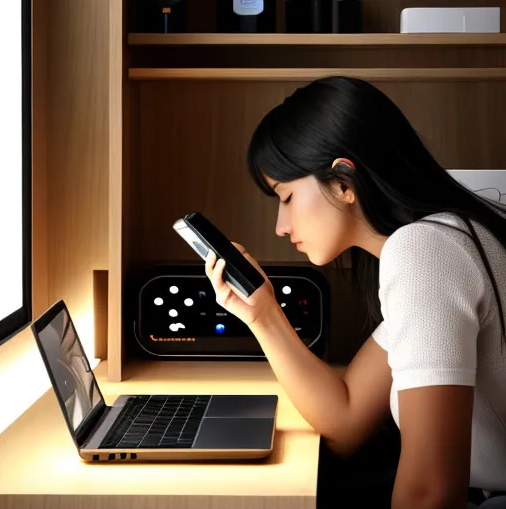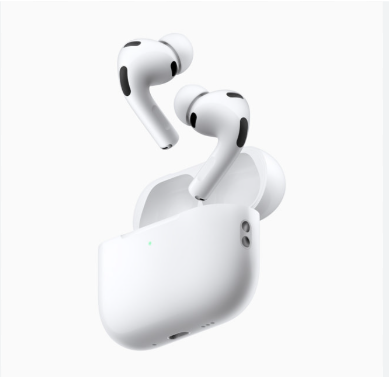
Recently, it has been discovered that there may be a way to send smells through your phone. In recent years, scientists have made significant advances in creating devices that can send smells, and in the near future, they might be able to create databases of smells that could be combined into our devices to emit different scents from smartphones, laptops, and other devices. This whole thing may sound like science fiction, but even some VR headset companies are already able to offer olfactory experiences. Scent is such a powerful sense that is able to transport people back in time, and remind them of memories that they cherish. Despite technological limitations, electronic scents are becoming a futuristic possibility.
How Would it Work?
Olfaction technology uses electronic devices that are often called e-noses to detect odors. These devices use sensor arrays that respond to many chemical compounds to mimic a human’s sense of smell. Once these sensors detect a certain smell, they make unique patterns, which the software algorithms are able to interpret and analyze. The technology is centered around a collection of scientific disciplines such as organic chemistry, machine learning, data science, photonics, silicon engineering, and software engineering. Combinations of natural compounds, chemicals, and aromatic molecules are synthesized to recreate certain scents. Devices that are known as “scent synthesizers” or “scent generators” create these smells in order to make the sensory immersion of users stronger. Parts of this new idea are a bit like how screens have tons of green, red, and blue dots that are mixed together to make billions of shades. There are 200 molecules that can be mixed together to create practically every odor!
Some scientists are currently experimenting with developing this technology into smartphones and wearable gadgets. These devices should release fragrances based on notifications.
How are we able to detect and smell scents? Our noses have receptors that find odorous molecules that are in the air. Then, the receptors send those odors up to our brains which identifies the scent.
How Would it Help and What Would it Do For Us?
There are multiple ways digital scents could benefit companies and help people in general.
Companies could use this new technology to lure people into buying their products, or help advertise their goods. Perfume companies could incorporate the scents of their products into ads or their website to give customers a better idea of what is being sold, or make them want to buy the product more than they would if they couldn’t smell it. Restaurants could add smell to a digital menu, making the food seem more appetizing and causing someone to crave their food, leading the company to have more customers and money. E-scents could help online grocery shoppers test for freshness. Studies show that leather and wood scents make you more likely to buy furniture, and citrus and floral scents will cause you to spend more time in a bookstore. Studies also show that adding ambient scents to a Nike store increased pleasure in customers and caused them to stay longer and spend more money than a store with no smell.
However, electronic scents can help in more ways than just making money: this technology could detect pollutants, emissions, and gasses, and even help diagnose illnesses with a distinct scent such as diabetes, cancer, and other infections. Advancement in virtual scent has the ability to impact many aspects of our lives for the better.
What are Some Challenges that are Involved?
Developing such high technology into our lives is no easy feat, and it comes with many challenges and problems that makes it difficult to make virtual smells come to life. Some of these challenges include:
- The pure complexity of smell: Replicating the complexity of smell is not an easy task, and even the smartest scientists run into problems with this. Smell is the sense that we understand the least, so being able to use it in technology is extremely difficult.
- Safety: Ensuring that scent technology is secure has proved to be quite difficult. Also, the chemical substances used in scent reproduction must be well tested and controlled.
- Compatibility: Making digital scent technology easily compatible with devices and applications is crucial. Developers must learn how to seamlessly combine scents into our modern day technology.
- Cost and accessibility: Digital fragrance is most likely pretty pricey and limited to unique industries.
Smelling through electronic devices may seem like a distant dream, but it is actually a theory that is coming to life, right before our eyes. From enhancing virtual experiences to improving product quality control, the potential applications are vast. However, with much research and time, we will have to overcome the challenges that come with expanding our technology. Noam Sobel, the neurobiology professor behind the research says, “Now, I believe we’re just a few years away from tel-e-smell — telephones that accurately record and recreate smells.” As we continue to extend the boundaries of what is possible, we will be able to explore more, and in entirely new ways. Not only that, but we will be able to digitally communicate with not only sights and sounds, but smells too.
Cites –
https://medium.com
https://ambiq.com
https://futureofmarketinginstitute.com
https://www.weizmann-usa.org
https://sloanreview.mit.edu
https://www.upi.com








Maddie • May 16, 2025 at 8:41 am
Congrats on your award!